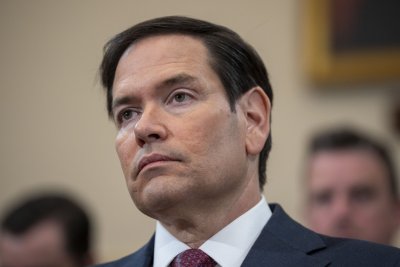California, epicenter of the nation’s housing crisis, is finally getting a housing agency
After years of soaring rents, increasingly out-of-reach home prices and an enduring homelessness crisis that touches every corner of the state, California is finally creating a state agency exclusively focused on housing issues.
You might wonder what took so long.
Earlier this year, Gov. Gavin Newsom introduced a proposal to split up the Business, Consumer Services and Housing Agency — an awkward grab bag of disparate bureaucratic operations — into two fresh agencies: one just for housing and homelessness-related departments and one for everything else.
The Legislature had until July 4 to veto the plan. It didn’t (though some Republicans tried). Now the work of setting up California’s first housing agency begins.
Supporters of the bureaucratic reshuffle say the move is long overdue. In surveys, Californians regularly name housing costs and homelessness as among the state’s top concerns. That alone warrants the creation of a new Cabinet-level advisor to the governor, said Ray Pearl, executive director of the California Housing Consortium, which advocates for affordable housing development.
“A Cabinet-level secretary who will sit with other Cabinet secretaries, whose purview will be housing … that is elevating the agenda to the highest level,” he said.
Pearl, like virtually every expert interviewed for this article about the new agency, described the reorganization as “just the first step” in bringing much-needed order and efficiency to California’s network of funding programs for affordable housing.
“Simply moving people around and giving them a new business card doesn’t change the system,” he said.
A spokesperson for the governor stressed that the creation of a new housing agency is part of a broader effort by Newsom to prioritize one of California’s most vexing issues. Since taking the helm of state government in 2018, the governor has ramped up pressure on local governments to plan for more housing, urged them to clear encampments of unhoused Californians and pushed for legislation aimed at ramping up construction.
“This is the first administration to make this a part of our everyday conversation — putting a magnifying glass on the issue of homelessness and finding ways to effectively address it. These structural and policy changes are going to create a generational impact,” said spokesperson Tara Gallegos.
Among the seven Cabinet-level agencies, the BCSH has always seemed like the “everything else” wing of state government. Affordable housing grantmakers, lenders and urban planning regulators share agency letterhead with cannabis and alcohol industry overseers, professional licensors, car mechanic watchdogs and everyone at the California Horse Racing Board.
“We used to call it ‘The Island of Misfit Toys,’” said Claudia Cappio, who ran both the California Housing Finance Agency and the Department of Housing and Community Development in the years immediately before and after 2012 when both were packed into the newly created BCSH. “Imagine a staff meeting of all those things … I learned a lot about horse racing.”
Aside from giving housing and homelessness their own box atop Newsom’s organizational chart, the chief selling point of the reorganization has been to simplify the state’s hydra of affordable housing financing systems.
Currently, there is one state organization where affordable housing developers apply for loans, another where they go for most grants, a third where they apply for the federal tax credits that builders use to entice private investors to back their projects and a fourth for the bonds needed to secure many of those credits. This doesn’t include one-off programs for veterans, transit-oriented development and short-term housing for homeless people, which are sprinkled across state government.
Complicating things further, the tax credit and bond funding programs — the backbone of funding for affordable housing development across the country — aren’t even under the governor’s control. Those programs are run by the state’s independently elected treasurer.
“Many, many states have what is essentially a housing finance agency that controls the majority of affordable housing funds,” said Sarah Karlinsky, who directs research at UC Berkeley’s Terner Center for Housing Innovation. California’s programs are split up, which is unusual.
Beyond that, “what makes California so unique,” said Karlinksy, “is the fact that the resources are spread across two different constitutional officers.”
That fragmentation appears to be adding to the cost of construction in California. A Terner Center analysis this spring estimated that each additional public funding source delays a project by, on average, four months, and adds an additional $20,460 in costs per unit.
Affordable housing construction is already distinctly expensive here. Building a publicly funded project in California costs more than 2.5 times more per square foot than in both Texas and Colorado, a recent report from the Rand Institute found.
Will the new housing agency solve that problem? Not everyone is convinced.
Of the many ways in which the scarcity of affordable housing affects most people, “the lines on the org chart” don’t crack the “top 100 list,” Sen. Christopher Cabaldon, a Napa Democrat, said about the governor’s proposal at a hearing in March.
Cabaldon noted that executive reorganizations are a semi-regular feature of California governance. The Business, Consumer Services and Housing Agency is itself the product of a reorganization which spun off California’s independent transportation agency.
“The dance of the secretaries we do constantly, always with grand ambitions,” said Cabaldon. “Simply saying that it’s going to cause more focus, that it will be streamlined, that it will cause leadership level action — but how?”
As written, the new housing agency will consist of the current agency’s housing-related entities along with a new Affordable Housing Finance Committee, which will be tasked with coordinating the housing subsidy programs currently under the governor’s control.
But the major funding sources managed by the treasurer’s office will remain where they are. The California Constitution wouldn’t have allowed Newsom to commandeer those functions from the independent treasurer even had he wanted to.
That’s a significant shortcoming, according to the Little Hoover Commission, the state government’s independent oversight agency, which reviewed the governor’s plan before it was passed along to the Legislature. In its final report, the commission recommended that the governor and treasurer strike a formal deal to “create a unified application and review process” for all the affordable finance programs under their respective purviews.
Neither the governor’s office nor the office of state Treasurer Fiona Ma would say whether or how they are pursuing that goal.
A single, unified application for every one of California’s public affordable housing funding programs has been the bureaucratic holy grail of California affordable developers and policy wonks since at least the mid-1990s. Though the reorganization stops short of requiring that, it set up both constitutional offices to better coordinate in the future, said Matt Schwartz, president of the California Housing Partnership, a nonprofit that advocates for affordable housing.
“There’s going to be a bit of diplomacy” between the two executive branches to work out a joint application, said Schwartz, who spoke to CalMatters earlier this year after the governor first introduced the proposal. “That’s the longer-term prize that many of us will be pushing to come out of this process.”
Some affordable housing advocates have urged lawmakers to be cautious in mushing the various bureaucracies together.
In a letter to four powerful Democratic legislators, the California Housing Consortium stressed that the application systems administered by the treasurer’s office already “function extremely well.”
That process “is not broken and doesn’t need fixing,” said Pearl, the consortium’s director. Before monkeying with it, he said, “let’s get the agency set up.”
Pearl and the consortium also noted that past legislation has already mandated the creation of a working group to propose a consolidated application. The findings of that group are due on July 1, 2026. That’s the same day the current BCSH is set to officially dissolve and the two new agencies will take its place.
That’s also just five months before statewide elections will be held to replace Newsom and Ma, giving voters a chance to decide who will shape the future of affordable housing policy in California.
Christopher writes for CalMatters, where this article originally appeared.




